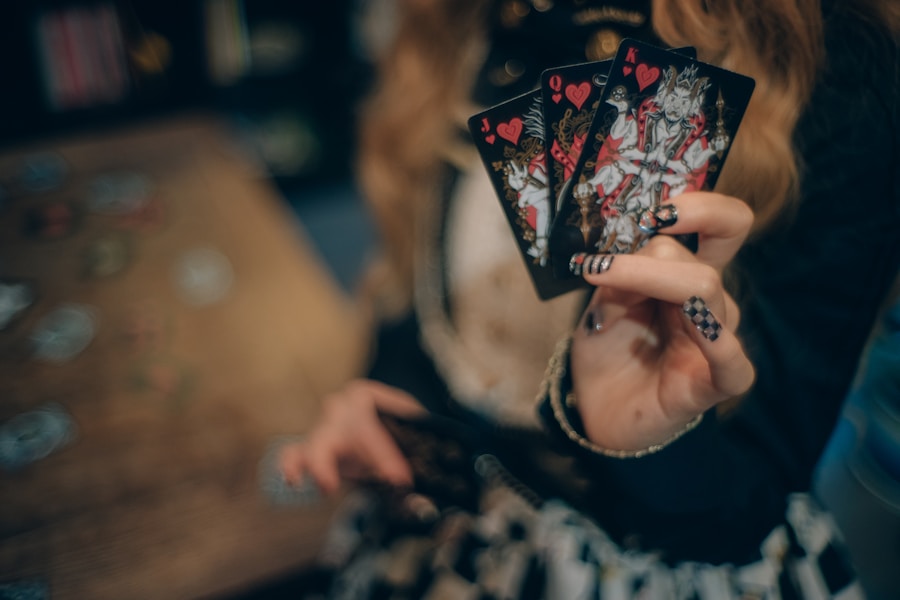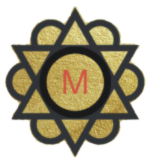
The energy of a Tarot deck is a multifaceted concept that encompasses the vibrational essence of the cards, the intentions of the reader, and the unique relationship that develops between the two. Each Tarot deck carries its own symbolism, imagery, and history, which contribute to its energetic signature. For instance, a Rider-Waite deck, with its rich iconography and traditional interpretations, may resonate differently than a more modern deck like the Wild Unknown, which employs minimalist art and abstract concepts.
Understanding this energy is crucial for effective readings, as it allows the reader to tap into the specific vibrations that each card emits. Moreover, the energy of a Tarot deck is not static; it evolves as the reader interacts with it over time. This dynamic relationship can be influenced by various factors, including the reader’s emotional state, intentions, and even the environment in which the readings take place.
For example, if a reader approaches their deck with a sense of curiosity and openness, they may find that the cards reveal deeper insights than if they were feeling anxious or distracted. Recognizing this interplay between the reader and the deck can enhance the overall experience and lead to more profound revelations during readings.
Key Takeaways
- Understanding the energy of your tarot deck is essential for effective readings
- Cleansing and clearing your tarot deck regularly helps maintain its positive energy
- Creating a sacred space for your tarot readings can enhance the overall experience
- Developing a personal connection with your tarot deck can improve the accuracy of your readings
- Using meditation and visualization can help you connect with your tarot deck on a deeper level
- Honing your intuition is crucial for achieving deeper and more insightful tarot readings
Cleansing and Clearing Your Tarot Deck
Cleansing and clearing a Tarot deck is an essential practice that helps to remove any stagnant or negative energies that may have accumulated over time. This process is particularly important if the deck has been used for multiple readings or has been exposed to various emotional atmospheres. There are several methods for cleansing a Tarot deck, each with its own unique benefits.
One popular technique involves using smoke from sage or palo santo to purify the cards. The act of wafting smoke over the deck not only clears away unwanted energies but also imbues the cards with a sense of renewal and freshness. Another effective method for cleansing is to use sound vibrations, such as ringing a bell or playing singing bowls.
Sound has a powerful ability to shift energy, and by incorporating it into your cleansing ritual, you can create an environment that fosters clarity and focus. Additionally, some practitioners prefer to use salt or crystals for cleansing purposes. Placing a deck on a bed of salt or surrounding it with cleansing crystals like selenite or clear quartz can help absorb any negative energies while simultaneously charging the cards with positive vibrations.
Whichever method you choose, it’s important to approach the cleansing process with intention and mindfulness.
Creating a Sacred Space for Your Tarot Readings

Creating a sacred space for Tarot readings is an integral part of establishing a conducive environment for intuitive work. A sacred space serves as a physical manifestation of your intention to connect with higher energies and gain insights from your Tarot deck. This space can be as simple or elaborate as you desire; what matters most is that it feels comfortable and resonates with your personal energy.
Incorporating elements that inspire tranquility and focus can enhance your sacred space significantly. Soft lighting, such as candles or fairy lights, can create an inviting atmosphere while also symbolizing illumination and clarity.
Additionally, surrounding yourself with items that hold personal significance—such as crystals, meaningful artwork, or even plants—can help anchor your energy and foster a deeper connection to your intuition. The act of arranging your sacred space can also serve as a ritual in itself, allowing you to set intentions for your readings and prepare mentally for the insights that may arise.
Developing a Personal Connection with Your Tarot Deck
Developing a personal connection with your Tarot deck is akin to nurturing a relationship; it requires time, attention, and an open heart. Each card in the deck has its own story and symbolism, which can resonate differently depending on your experiences and emotions. To cultivate this connection, spend time engaging with each card individually.
This could involve journaling about your impressions of each card, meditating on their imagery, or even creating art inspired by their themes. By immersing yourself in the nuances of each card, you begin to form a bond that transcends mere interpretation. Additionally, consider incorporating your personal experiences into your readings.
When you draw a card that resonates with a particular event in your life, allow yourself to explore those connections deeply. This practice not only enriches your understanding of the cards but also reinforces the idea that Tarot is not just about divination; it’s also about self-discovery and personal growth. As you continue to work with your deck, you may find that certain cards begin to speak to you more profoundly than others, revealing layers of meaning that are uniquely relevant to your journey.
Using Meditation and Visualization to Connect with Your Tarot Deck
Meditation and visualization are powerful tools for deepening your connection with your Tarot deck. These practices allow you to quiet the mind and tune into the subtle energies that surround you, creating an ideal state for intuitive insights to emerge. Begin by finding a comfortable position in your sacred space, holding your Tarot deck close to your heart or placing it in front of you.
Close your eyes and take several deep breaths, allowing yourself to relax fully into the moment. As you breathe in, visualize white light enveloping you and your deck, creating a protective barrier against any distractions. Once you feel centered, begin to visualize each card in your deck as a portal to deeper understanding.
Imagine yourself stepping into the imagery of a specific card—perhaps the serene landscape of The Star or the tumultuous waters of The Tower. Allow yourself to experience the emotions and sensations associated with that card fully. What do you see?
What do you feel? This immersive experience can reveal insights that may not surface during traditional readings. By regularly incorporating meditation and visualization into your practice, you cultivate a richer relationship with your Tarot deck that enhances both your readings and personal growth.
Honing Your Intuition for Deeper Tarot Readings

Honing intuition is perhaps one of the most vital aspects of conducting meaningful Tarot readings. Intuition acts as an internal compass that guides readers toward insights that may not be immediately apparent through logical reasoning alone. To develop this intuitive muscle, it’s essential to create space for self-reflection and exploration.
Journaling about your thoughts and feelings regarding past readings can help identify patterns in your intuitive responses. Over time, you may notice recurring themes or symbols that resonate deeply with you. Engaging in practices such as mindfulness or grounding exercises can also enhance intuitive abilities.
Mindfulness encourages present-moment awareness, allowing you to tune into subtle shifts in energy during readings. Grounding techniques—such as visualizing roots extending from your feet into the earth—can help stabilize your energy and create clarity in your intuitive insights. Additionally, consider participating in group readings or discussions with fellow Tarot enthusiasts; sharing experiences can provide new perspectives and foster collective intuition.
As you continue to refine this skill set, you will find that your readings become increasingly profound and resonant, offering guidance not only for yourself but also for those who seek your insights.
If you’re looking to deepen your connection with your Tarot deck, you may also be interested in exploring the symbolism and meanings behind specific cards. One article that delves into this topic is The Tarot Card Fool: Embracing New Beginnings and the Unknown. This article explores the significance of the Fool card in Tarot readings and how it can symbolize embracing new opportunities and stepping into the unknown. Understanding the deeper meanings behind individual cards can help you connect more deeply with your deck and enhance the insights you receive during readings.
FAQs
What is a Tarot Deck?
A Tarot deck is a set of 78 cards, typically used for divination, self-reflection, and spiritual guidance. The deck is divided into two main sections: the Major Arcana and the Minor Arcana.
How can I connect with my Tarot deck?
To connect with your Tarot deck for deeper readings, it’s important to spend time with the cards, meditate with them, and develop a personal relationship with each card. You can also cleanse and consecrate your deck to clear any lingering energies and set your own intentions.
Why is it important to connect with your Tarot deck?
Connecting with your Tarot deck allows you to develop a deeper understanding of the cards and their meanings. It also helps you to establish a strong intuitive connection, which can enhance the accuracy and depth of your readings.
What are some ways to deepen my connection with my Tarot deck?
Some ways to deepen your connection with your Tarot deck include journaling about your experiences with the cards, practicing daily card pulls, and exploring different spreads and interpretations. You can also engage in rituals or ceremonies to honor and connect with your deck.
Can anyone connect with a Tarot deck, regardless of their beliefs or background?
Yes, anyone can connect with a Tarot deck, regardless of their beliefs or background. The Tarot is a versatile tool that can be used by people of all spiritual paths and belief systems. The key is to approach the cards with an open mind and a willingness to engage in self-reflection and intuition.






